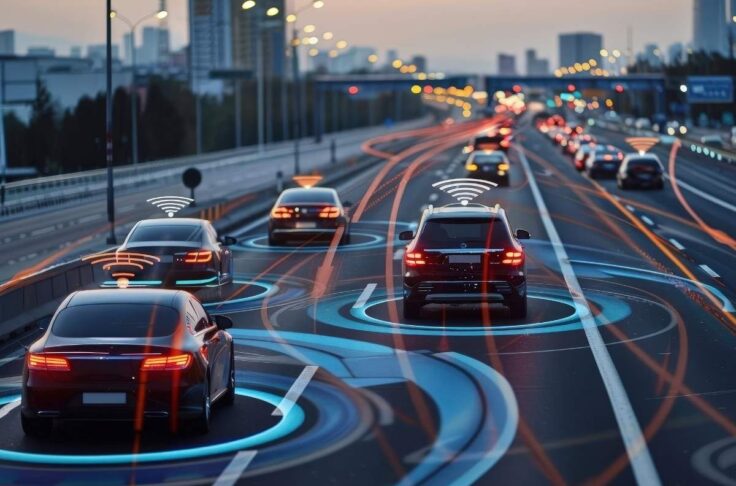Key Success Factors of Free Floating Operations
Summary
Free floating shared mobility services have met consumer demand to make getting around easier. It is critical to keep users engaged in the service through reliability and convenience. Part of that is operational and part of that is technical, so operators need to decide how to balance those needs.

In 2008, carsharing 2.0 was introduced to consumers by Daimler with car2go (now SHARE NOW), the world’s first free floating carsharing service (Research Gate). Instead of starting and ending at the same location, free floating carsharing gave users more flexibility and convenience by letting them park anywhere inside the operating area. As a result, free floating carsharing was able to fill the gap that carsharing 1.0, round-trip station-based carsharing, could not address.
It has been ten years since we helped car2go with their pilot project, and since then the free floating market has exploded. We have seen independent operators pop-up throughout different cities, larger OEM-backed operators gain market share, and mergers happen between operators to stay competitive. These events have highlighted commonalities between successful free floating operations, which apply to either the carsharing or scooter sharing model.
Reliable Technology
On the surface, it may seem like an app and website platform are the foundation of a shared mobility service. This is partially true, but behind the scenes there are a wide range of technological intricacies that serve as the backbone to successful free floating services.
Building a solid technology offering is a feat that can be difficult to achieve. Users of a free floating carsharing or scooter sharing service need to be reassured they can get from A to B when needed in order to continue using the service. To accomplish this, the vehicle’s GPS signal needs to be accurate, since the vehicle could be parked anywhere. By having updated GPS positioning at all times, operators can avoid user dissatisfaction from a ghost vehicle, as well as fleet manager frustration of having to manually look for the vehicle.
The vehicle also needs to receive communication from the reservation platform, and unlock only for the authorized user. If shared mobility operators can provide a reliable service, then people will begin to opt for free floating services as a convenient alternative transportation option for their mobility needs (Deloitte Insights).
In addition, the vehicle must be able to communicate to the servers, and the servers need to run interruption-free. Focusing on providing service stability differentiates us from other players in the industry, and we offer uncompromised reliability with our technology to enable scalable free floating services. Servers play a vital role in building the foundation for a successful shared mobility service.
Member Engagement
Regardless of your membership base size, getting to know your existing members is key to building brand affinity, especially as shared mobility continues to grow in popularity. In order to retain your users against new competitors, it will be necessary to leverage trip data to keep them engaged.
Specifically, comprehensive in-car hardware alongside a reporting system will provide you a wealth of insight on driver behaviour and trip patterns. With this data, you can substantiate anecdotal observations made on demand patterns. For example, if you notice there are less cars downtown mid-morning, you could look to data and realize that in fact there is a spike in trips taken from 10 am to 11 am, the duration is 10 minutes on average, and mostly made on the corporate profile. This insight could help you identify the opportunity to build up corporate account sign-ups and also better distribute your fleet to meet this demand.
With data at your fingertips, you can also segment users to better meet their needs. For example, tracking your top users’ month over month usage can help you identify unreported issues if all of a sudden you see a decline in usage. This insight equips you with business intelligence to address issues you may have otherwise been unaware of. Similarly, you could observe trends in usage to manage day-to-day operations and better forecast utilization.
Data can also support campaigns to effectively incentivize infrequent users. Based on when was the last time the user drove, you can give them a set number of credits that will be applied towards their next trip. Instead of giving all your infrequent users 30 minutes, you can use data to determine which segment would need 10 minutes as an incentive versus 60 minutes, for example.
Ready to Scale
As with any business, adapting to the changing landscape is needed in order to stay competitive. Once you are satisfied with the core of your operations, you may want to think of ways to further improve your free floating service. This could include growing your carsharing or scooter sharing fleet size, operating area, or technology features and enhancements.
Shared mobility operators can generally tell you there is an optimal ratio of users to vehicles they want to achieve to really thrive in the market. Having the right technology will make this goal easier to achieve if the process of adding or removing cars is manageable, and modifying the operating area is straightforward. Since mobility services are becoming a commodity, it is crucial that your technology provider allows you to grow quickly while still offering the reliable service users expect.
It also isn’t uncommon for operators to outgrow their original set-up, and instead look for new options to manage their needs. A good technology stack will allow you to easily integrate with third party tools, or even already be integrated. With our Shared Mobility OS, we have some of the best third party platforms already set-up for operators to easily implement, whether it be an improved payment system or a process automation tool.
Prepare for Success in Free Floating Operations
Operating a free floating service can seem complex, with tasks ranging from managing cars or scooters to planning campaigns to increase utilization. There will be different metrics you decide to use on how to measure success, but at the end of the day, technology is the foundation your operation is built on.
We enable operators to leapfrog over the learning curve of shared mobility by providing an unmatched product offering built on years of experience. We focus heavily on providing reliable server uptime, and can confidently share our 99.5% service reliability even at scale. We have been in the shared mobility market for 25 years and understand the need for both valuable experience and individual flexibility, which is why we built the Shared Mobility OS to meet any operators’ needs.
At INVERS, we are proud of the progress we have made in serving the needs of the free floating market. With WaiveCar’s unique business model, Citiz’s diverse offering, and emmy’s entrance into a new space, we are confident our technology enables successful free floating operations.


